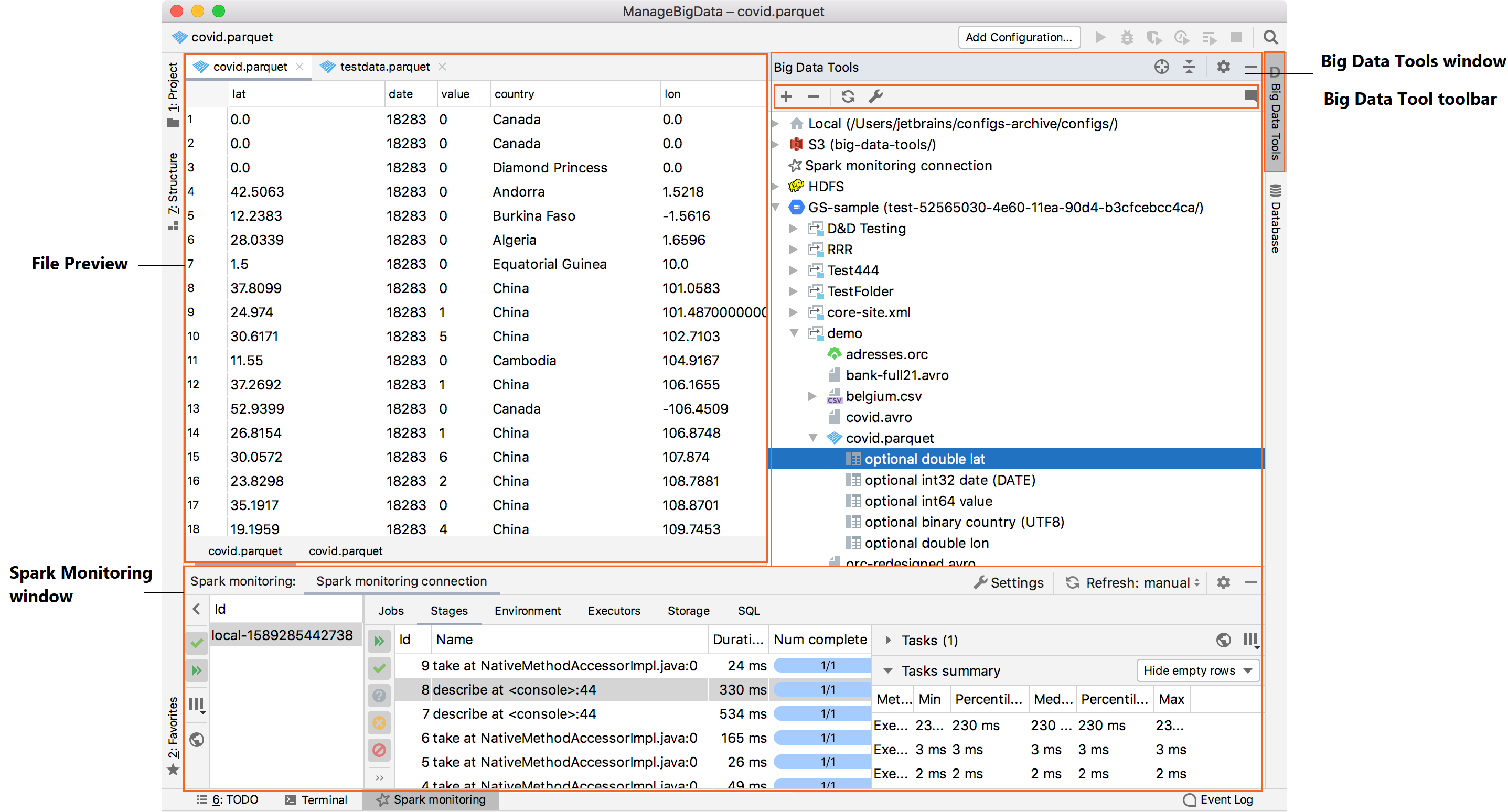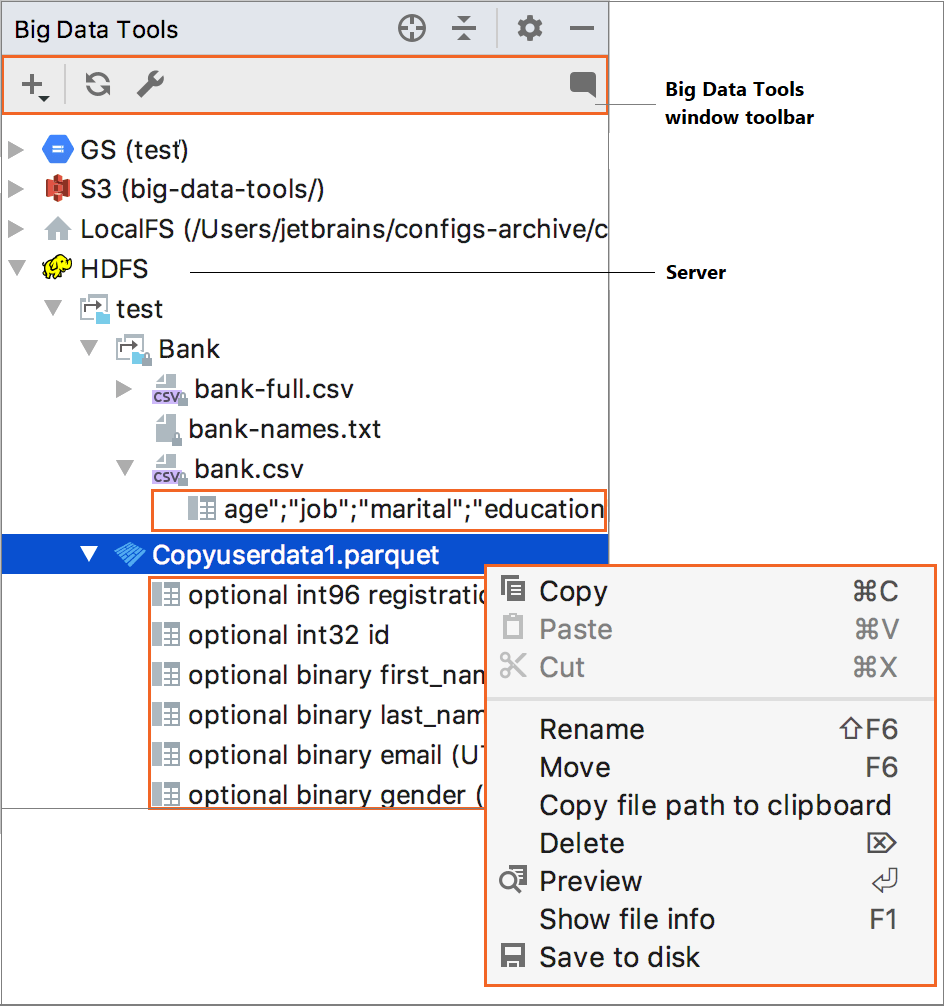Big Data tools
The Big Data Tools plugin is available for DataGrip 2020.1 and later. It provides specific capabilities to monitor and process data with AWS S3, Spark, Google Cloud Storage, Minio, Linode, Digital Open Space, Microsoft Azure and Hadoop Distributed File System (HDFS).

Getting started with Big Data Tools in DataGrip
The basic workflow for big data processing in DataGrip includes the following steps:
Configure your environment
Install the Big Data Tools plugin.
Create a new project in DataGrip.
Configure a connection to the target server.
Work with your data files.
Get familiar with the user interface
When you install the Big Data Tools plugin for DataGrip, the following user interface elements appear:
Big Data Tools window
The Big Data Tools window appears in the rightmost group of the tool windows. The window displays the list of the configured servers and files structured by folders.
You can navigate through the directories and preview columnar structures of .csv and .parquet files.
Basic operations on data files are available from the context menu. You can also move files by dragging them to the target directory on the target server.

For the basic operations with the servers, use the window toolbar:
| Item | Description |
|---|---|
| Adds a new connection to a server. | |
| Refreshes connections to all configured servers. | |
| Opens the connection settings for the selected server. |
Spark tool windows

This window appears when you have connected to a Spark server by creating a new connection.